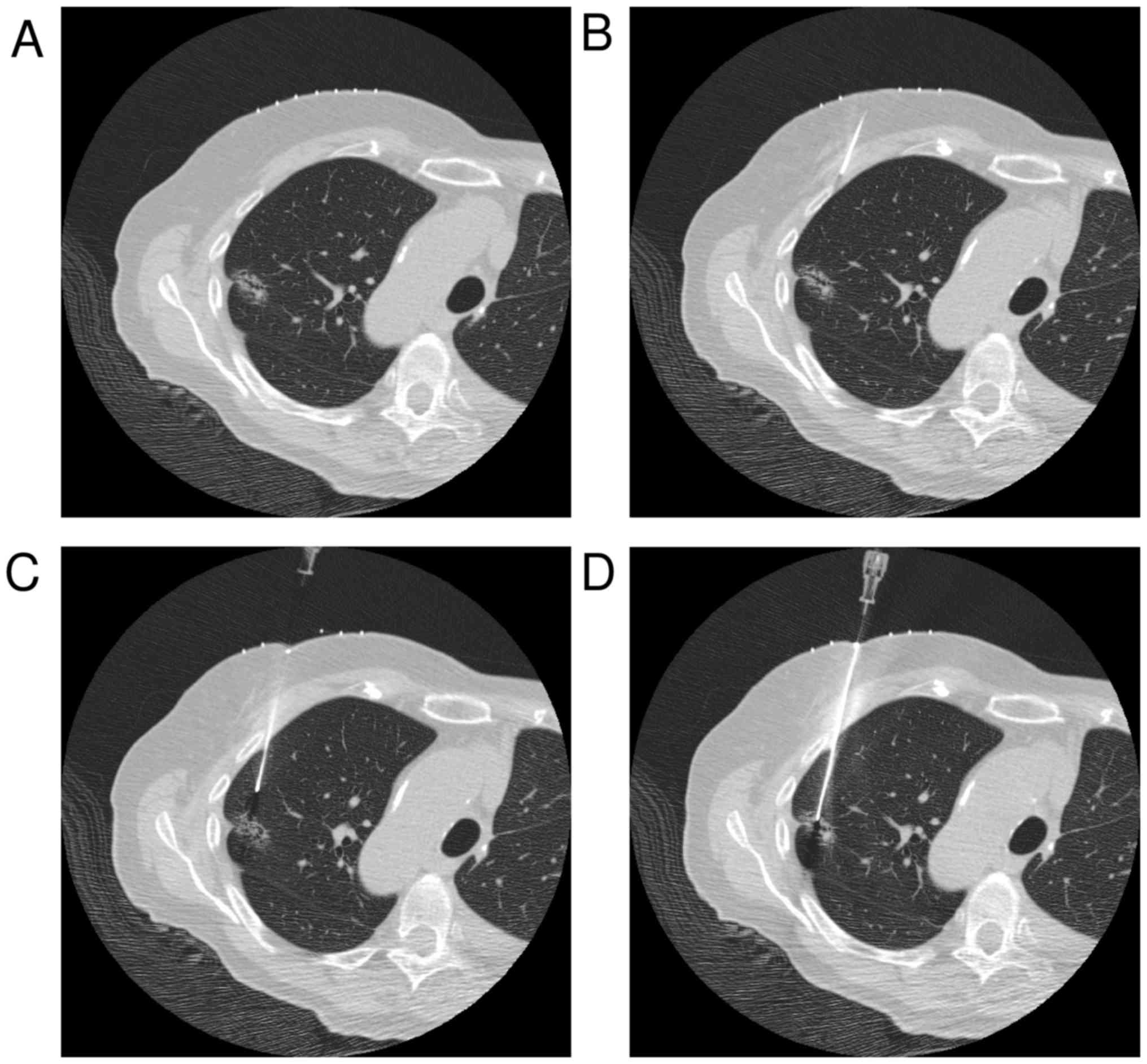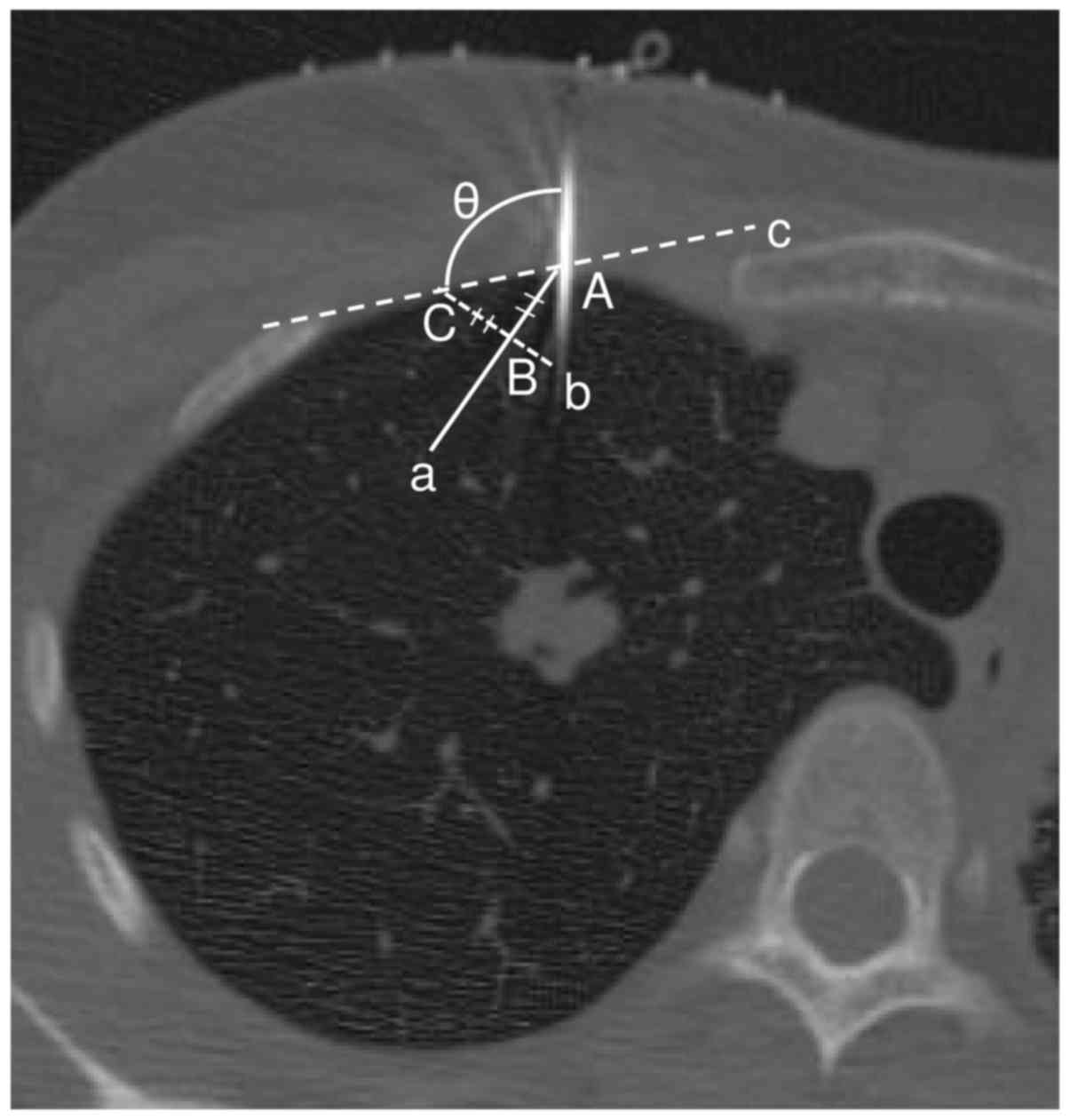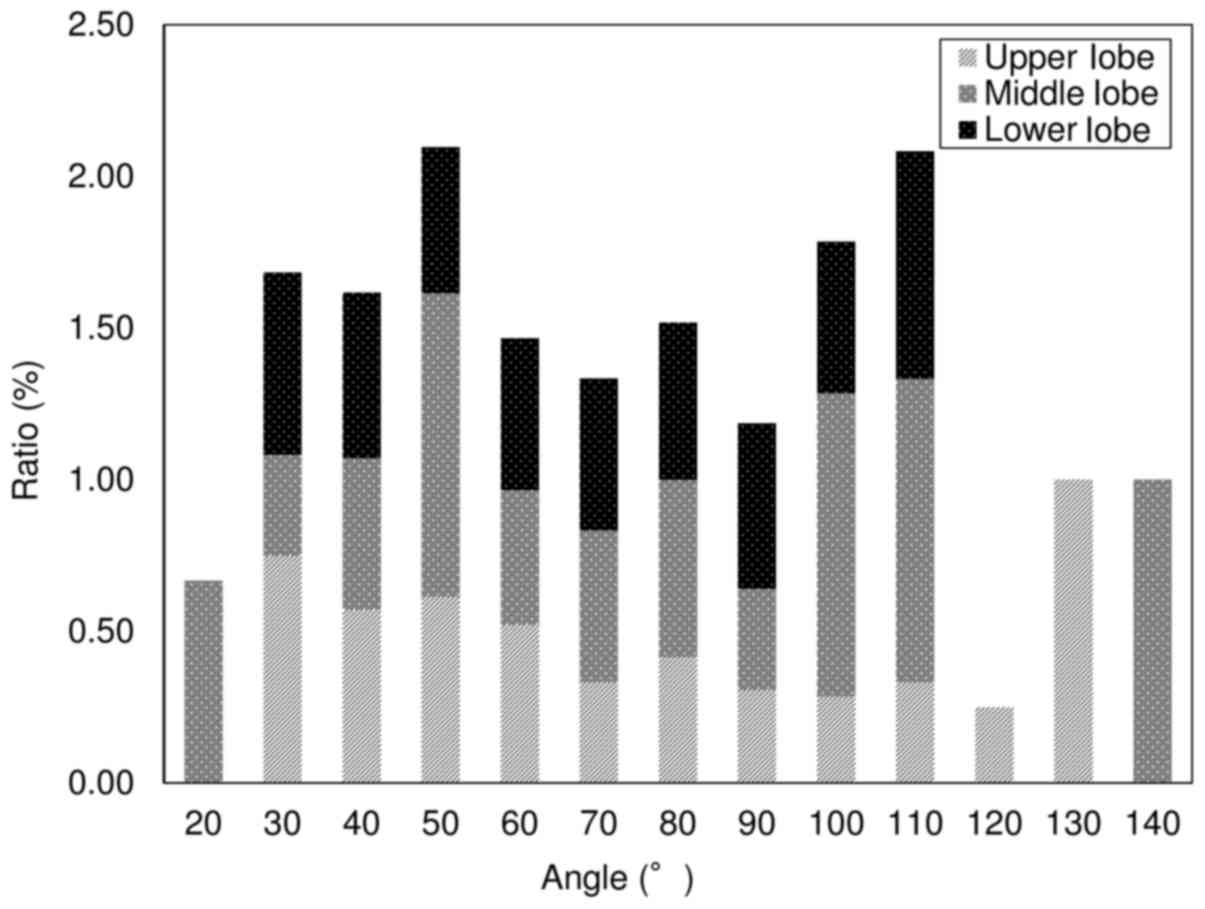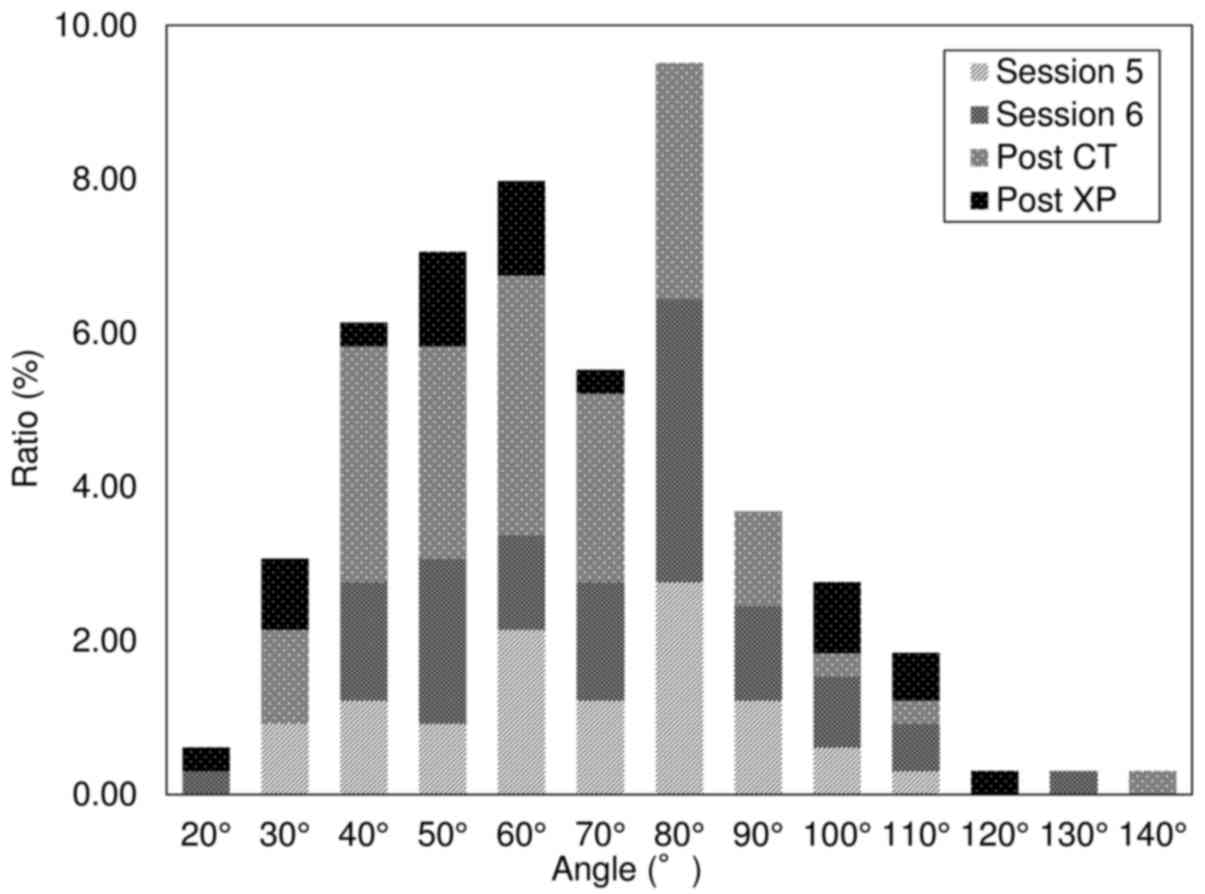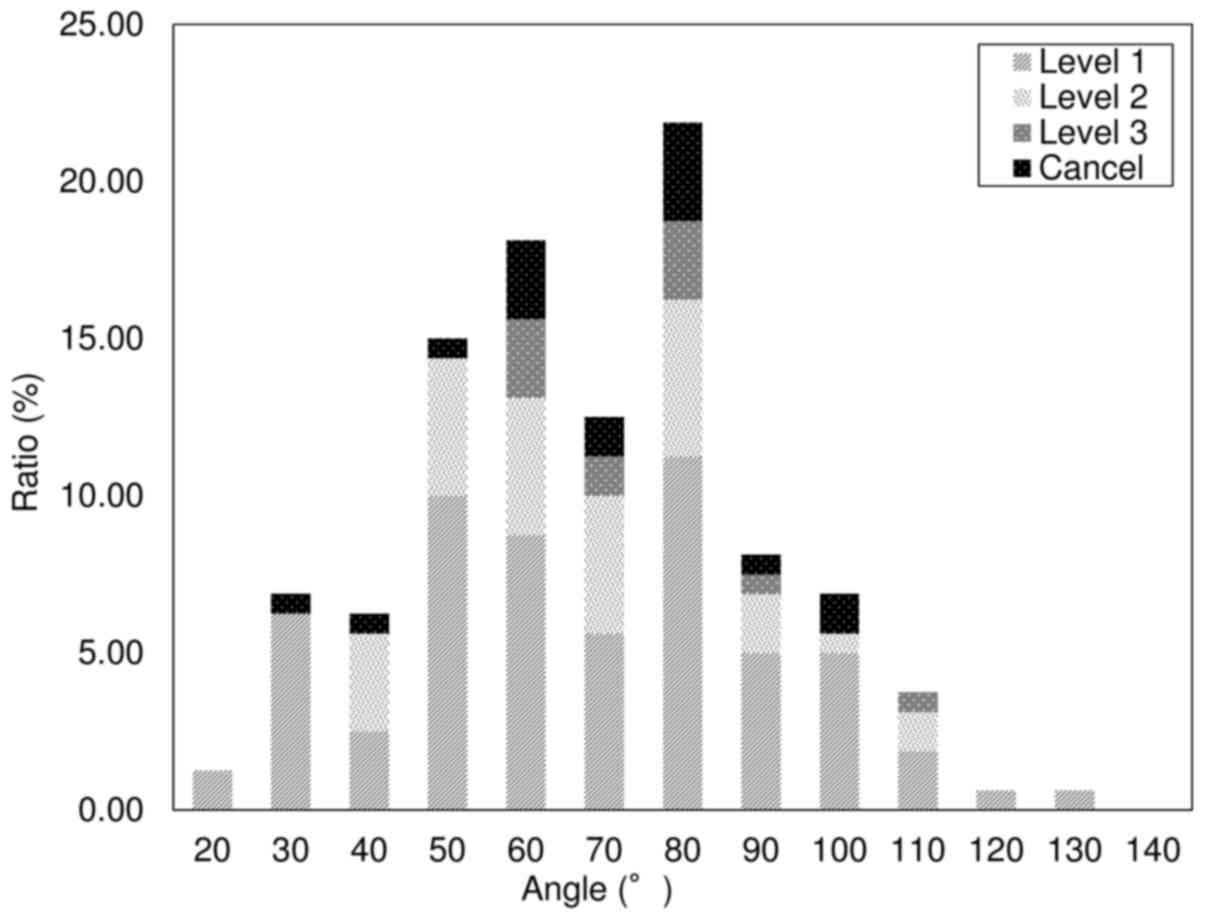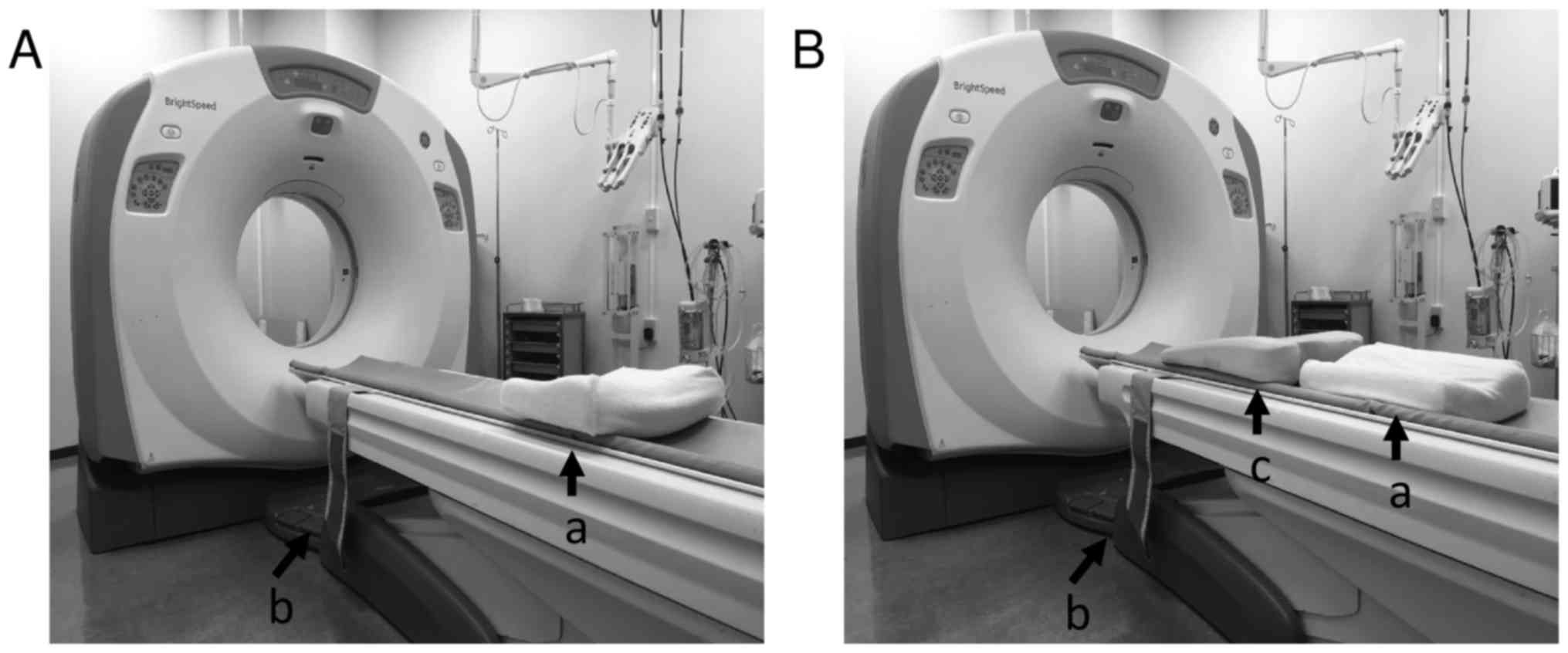|
1
|
Diederich S, Wormanns D and Heindel W:
Low-dose CT: New tool for screening lung cancer? Eur Radiol.
11:1916–1924. 2001. View Article : Google Scholar : PubMed/NCBI
|
|
2
|
Henschke CI, Yankelevits DF, Libby DM,
McCauley D, Pasmantier M, Altorki NK, Smith JP and Miettinen OS:
Early lung cancer action project: Annual screening using single
helical CT. Ann N Y Acad Sci. 952:124–134. 2001. View Article : Google Scholar : PubMed/NCBI
|
|
3
|
Henschke CI, Yankelevits DF, Mirtcheva R,
McGuinness G and McCauley D; Miettinen OS; ELCAP Group, : CT
screening for lung cancer: Frequency and significance of part-solid
and nonsolid nodules. AJR Am J Roentgenol. 178:1053–1057. 2002.
View Article : Google Scholar : PubMed/NCBI
|
|
4
|
Henschke CI, Yankelevits DF, Libby DM and
Kimmel M: CT screening for lung cancer: The first ten years. Cancer
J. 8 Suppl 1:S47–S54. 2002.PubMed/NCBI
|
|
5
|
Pastorino U, Bellomi M, Landoni C, De
Fiori E, Arnaldi P, Picchio M, Pelosi G, Boyle P and Fazio F: Early
lung cancer detection with spiral CT and positron emission
tomography in heavy smokers: 2-year results. Lancet. 362:593–597.
2003. View Article : Google Scholar : PubMed/NCBI
|
|
6
|
Bastarrika G, García-Velloso MJ, Lozano
MD, Montes U, Torre W, Spiteri N, Campo A, Seijo L, Alcaide AB,
Pueyo J, et al: Early lung cancer detection using spiral computed
tomography and positron emission tomography. Am J Respir Crit Care
Med. 171:1378–1383. 2005. View Article : Google Scholar : PubMed/NCBI
|
|
7
|
Harter LP, Moss AA, Goldberg HI and Gross
BH: CT-guided fine-needle aspirations for diagnosis of benign and
malignant disease. AJR Am J Roentgenol. 140:363–367. 1983.
View Article : Google Scholar : PubMed/NCBI
|
|
8
|
Li H, Boiselle PM, Shepard JO,
Trotman-Dickenson B and McLoud TC: Diagnostic accuracy and safety
of CT-guided percutaneous needle aspiration biopsy of the lung:
Comparison of small and large pulmonary nodules. AJR Am J
Roentgenol. 167:105–109. 1996. View Article : Google Scholar : PubMed/NCBI
|
|
9
|
Klein JS and Zarka MA: Transthoracic
needle biopsy: An overview. J Thorac Imaging. 12:232–249. 1997.
View Article : Google Scholar : PubMed/NCBI
|
|
10
|
Takeshita J, Masago K, Kato R, Hata A,
Kaji R, Fujita S and Katakami N: CT-guided fine needle aspiration
and core needle biopsy of pulmonary lesions: A single-center
experience on 750 biopsies in Japan. AJR Am J Roentgenol.
204:29–34. 2015. View Article : Google Scholar : PubMed/NCBI
|
|
11
|
Tomiyama N, Yasuhara Y, Nakajima Y, Adachi
S, Arai Y, Kusumoto M, Eguchi K, Kuriyama K, Sakai F, Noguchi M, et
al: CT-guided needle biopsy of lung lesions: A survey of severe
complication based on 9783 biopsies in Japan. Eur J Radiol.
59:60–64. 2006. View Article : Google Scholar : PubMed/NCBI
|
|
12
|
Poulou LS, Tsagouli P, Ziakas PD, Politi
D, Trigidou R and Thanos L: Computed tomography-guided needle
aspiration and biopsy of pulmonary lesions: A single-center
experience in 1000 patients. Acta Radiol. 54:640–645. 2013.
View Article : Google Scholar : PubMed/NCBI
|
|
13
|
Hiraki T, Mimura H, Gobara H, Iguchi T,
Fujiwara H, Sakurai J, Matsui Y, Inoue D, Toyooka S, Sano Y and
Kanazawa S: CT fluoroscopy-guided biopsy of 1,000 pulmonary lesions
performed with 20-gauge coaxial cutting needles: Diagnostic yield
and risk factors for diagnostic failure. Chest. 136:1612–1617.
2009. View Article : Google Scholar : PubMed/NCBI
|
|
14
|
Tsukada H, Satou T, Iwashima A and Souma
T: Diagnostic accuracy of CT-guided automated needle biopsy of lung
nodules. AJR Am J Roentgenol. 175:239–243. 2000. View Article : Google Scholar : PubMed/NCBI
|
|
15
|
Laurent F, Latrabe V, Vergier B, Montaudon
M, Vernejoux JM and Dubrez J: CT-guided transthoracic needle biopsy
of pulmonary nodules smaller than 20 mm: Results with an automated
20-gauge coaxial cutting needle. Clin Radiol. 55:281–287. 2000.
View Article : Google Scholar : PubMed/NCBI
|
|
16
|
Saji H, Nakamura H, Tsuchida T, Tsuboi M,
Kawate N, Konaka C and Kato H: The incidence and the risk of
pneumothorax and chest tube placement after percutaneous CT-guided
lung biopsy: The angle of the needle trajectory is a novel
predictor. Chest. 121:1521–1566. 2002. View Article : Google Scholar : PubMed/NCBI
|
|
17
|
Yeow KM, Su IH, Pan KT, Tsay PK, Lui KW,
Cheung YC and Chou AS: Risk factors of pneumothorax and bleeding:
Multivariate analysis of 660 CT-guided coaxial cutting needle lung
biopsies. Chest. 126:748–754. 2004. View Article : Google Scholar : PubMed/NCBI
|
|
18
|
Kazerooni EA, Lim FT, Mikhail A and
Martinez FJ: Risk of pneumothorax in CT-guided transthoracic needle
aspiration biopsy of the lung. Radiology. 198:371–375. 1996.
View Article : Google Scholar : PubMed/NCBI
|
|
19
|
Topal U and Ediz B: Transthoracic needle
biopsy: Factors effecting risk of pneumothorax. Eur J Radiol.
48:263–267. 2003. View Article : Google Scholar : PubMed/NCBI
|
|
20
|
Yeow KM, Tsay PK, Cheung YC, Lui KW, Pan
KT and Chou AS: Factors affecting diagnostic accuracy of CT-guided
coaxial cutting needle lung biopsy: Retrospective analysis of 631
procedures. J Vasc Interv Radiol. 14:581–588. 2003. View Article : Google Scholar : PubMed/NCBI
|
|
21
|
Janssens JP, Pache JC and Nicod LP:
Physiological changes in respiratory function associated with
ageing. Eur Respir J. 13:197–205. 1999. View Article : Google Scholar : PubMed/NCBI
|
|
22
|
Zompatori M, Fasano L, Mazzoli M, Sciascia
N, Cavina M, Pacilli AM and Paioli D: Spiral CT evaluation of
pulmonary emphysema using a low-dose technique. Radiol Med.
104:13–24. 2002.(In English, Italian). PubMed/NCBI
|
|
23
|
Hanley J, Debois MM, Mah D, Mageras GS,
Raben A, Rosenzweig K, Mychalczak B, Schwartz LH, Gloeggler PJ,
Lutz W, et al: Deep inspiration breath-hold technique for lung
tumors: The potential value of target immobilization and reduced
lung density in dose escalation. Int J Radiat Oncol Biol Phys.
45:603–611. 1999. View Article : Google Scholar : PubMed/NCBI
|
|
24
|
Wong JW, Sharpe MB, Jaffray DA, Kini VR,
Robertson JM, Stromberg JS and Martinez AA: The use of active
breathing control (ABC) to reduce margin for breathing motion. Int
J Radiat Oncol Biol Phys. 44:911–919. 1999. View Article : Google Scholar : PubMed/NCBI
|
|
25
|
Takayama K, Mizowaki T, Kokubo M, Kawada
N, Nakayama H, Narita Y, Nagano K, Kamino Y and Hiraoka M: Initial
validations for pursuing irradiation using a gimbals tracking
system. Radiother Oncol. 93:45–49. 2009. View Article : Google Scholar : PubMed/NCBI
|



